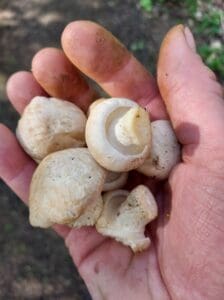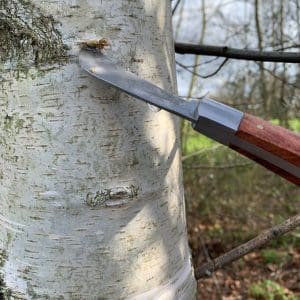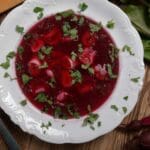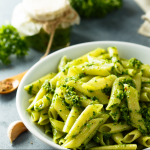We’re Foraging in March, the weather is slowly warming up and flowers are starting to bloom but the weather can vary across the country and further north there’s still a risk of snow. The Anglo-Saxon name for the month was Hlyd monath meaning stormy month. If the weather is terrible take some solace in this old saying ‘March winds and April showers, bring forth May flowers.’
So what can you forage in March? Here are our top five picks for the month.
Birch sap
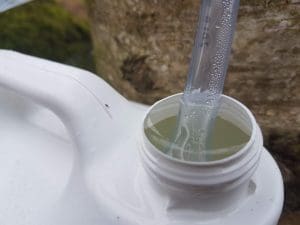
One of my all time favourite wild ingredients, that’s only available for a short window(typically the last 2 weeks of March into April) Birch trees store their energy in the form of sap over winter and as the temperature rises and the tree gets ready to produce new growth the sap makes it way from the roots up to the new shoots. The sap can be drunk straight from the tree, it contains betulinic and salicylic acids and is a great tonic or you can boil the sap down and turn it into Birch Sap syrup which in my opinion is even better than Maple syrup. Read more about harvesting birch sap here.
Click here for the ID guide for Birch.
Gorse
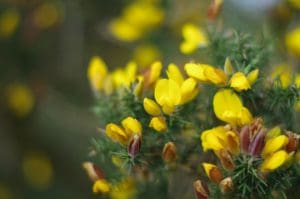
A common plant/shrub that you typically find on coastal cliffs and moors, it can flower at any time of the year. When there’s not much other colour around these flowers are great added to salads and desserts and have a mild pea flavour. Just watch out for the long, sharp thorns!
Click here for the ID guide for Gorse.
Hawthorn leaves
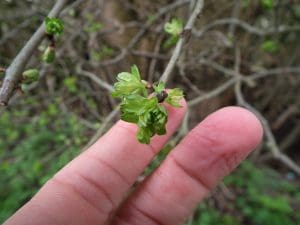
The leaves of Hawthorn are at their best in March before they’ve toughened up and become bitter. Add them to salads or gently wilt them like spinach. Traditionally the leaves and young buds were known as bread and cheese, they don’t really taste of either they have more of a mild nutty flavour.
Click here for the ID guide for Hawthorn.
Cleavers
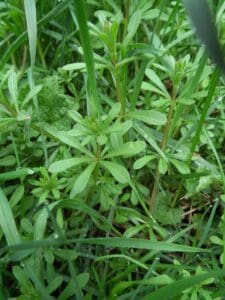
Sticky weed, sticky willy, goosegrass or cleavers is a plant with lots of common names and one that most people are familiar with. It’s related to coffee and the seeds later in the year do make a good coffee alternative but March is a good time to gather the young shoots before they’ve developed their ‘sticky’ hairs. It can be eaten raw or gently steamed and has a mild cucumber flavour.
Click here for the ID guide for Cleavers.
Glistening Inkcap
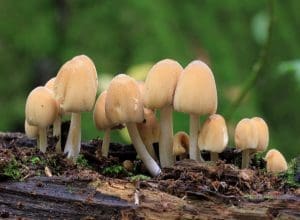
A fairly common species that gets its name from the fine ‘mica’ coating on the caps, this coating gives it a ‘glittery’ appearance. They can look very similar to the Common Inkcap which is toxic so only harvest specimens where the coating is obvious. They can be cooked but tend to disappear to nothing. I salt them and use them as a squid ink replacement to make risotto and pasta dishes.
Click here for the ID guide for Glistening Inkcap.
Recipe of the month for March
Birch Sap Syrup Sticky Pudding
This soft sticky pudding with sultanas and a birch syrup flavoured custard topping is an absolute winner, that’s a true celebration of birch sap syrup.
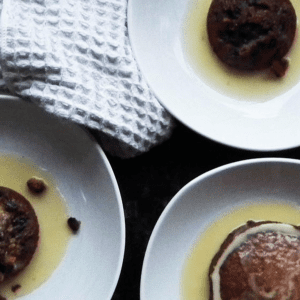
Makes 6 puddings
Ingredients:
- 200g sultanas
- 1 tsp vanilla extract
- 2 eggs
- 1 tsp bicarbonate of soda
- 200g self-raising flour
- 90g non salted butter, cubed
- 2 tbsp birch sap syrup
- 100ml full fat milk
- 150g brown sugar
Method:
- Put the sultanas in a bowl and put in the microwave on high for 1 minute to soften them, remove and stir in the vanilla extract
- In a large bowl, mix the flour and bicarbonate of soda
- In a separate large bowl, beat the butter and sugar together, add the eggs and birch sap syrup a little at a time and beat until it’s all in
- To this mixture fold in the flour in a figure of eight, half of the flour and half of the milk to begin, adding it slowly until it’s all combined, then pour in the sultanas. (it may look like it’s splitting a little but that’s fine)
- Spoon this mixture evenly between 6 small pudding tins – about 200-250ml – and put in the oven preheated to 180C for 20 minutes
For the Sauce:
- 50g brown sugar
- 250ml double cream
- 6 tbls birch sap syrup
Method:
- Whilst the pudding is baking, put the sugar, butter and half the cream in a saucepan over a medium to low heat until all the butter has melted.
- Stir in the birch sap syrup and allow the mixture to simmer for 3 minutes – stirring to make sure it doesn’t burn.
- Remove from the heat and beat in the remaining cream.
To serve:
- Remove the puddings from the oven and leave to cool for 3 minutes, using a palette knife, or something similar, tease each the puddings out of their moulds on to your serving plates
- Pour over your warm sauce and enjoy (or leave in the fridge for 1 day to make it extra sticky, then microwave before eating)
Here’s a nice spring Foraging Video guide we made with Forager Gavin 🙂
Click here for more Spring recipes
What to forage in February.
When we’re Foraging in February the weather tends to still be cold and there’s still the risk of snow and frost but on the odd days when the sun does shine it gives me hope that spring is just around the corner.
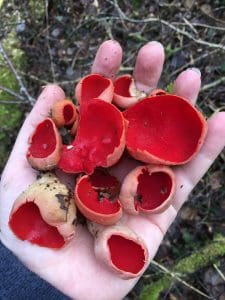
What to forage in April.
Foraging in April, it’s one of my favourite months to forage, the warming temperatures make everything burst to life. It’s the month for fresh spring greens and herbs but there are also a few gourmet mushrooms too.
